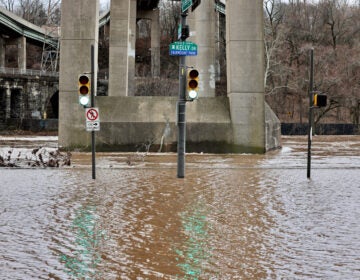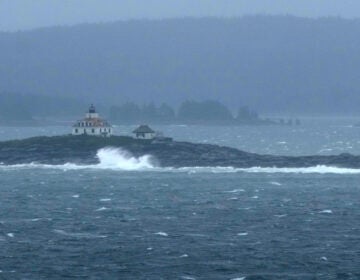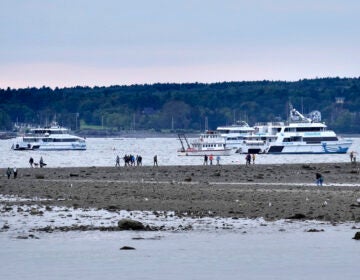Hurricane Ida traps Louisianans, leaves the grid a shambles
Ida’s landfall came on the same date Hurricane Katrina ravaged Louisiana and Mississippi 16 years earlier, about 40 miles west of where Category 3 Katrina first struck land.
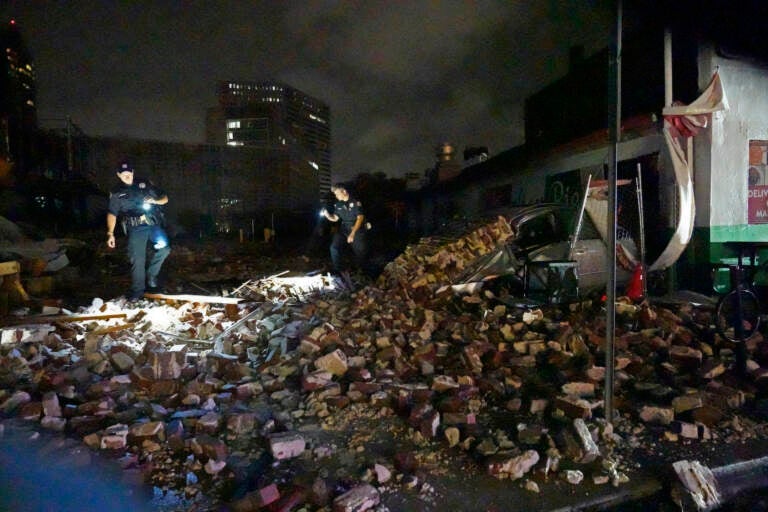
New Orleans Police detectives Adam Buckner, left, and Alexander Reiter, look over debris from a building that collapsed during Hurricane Ida in New Orleans, Monday, Aug. 30, 2021. Hurricane Ida knocked out power to all of New Orleans and inundated coastal Louisiana communities on a deadly path through the Gulf Coast that is still unfolding and promises more destruction. (AP Photo/Gerald Herbert)
A fearsome Hurricane Ida left scores of coastal Louisiana residents trapped by floodwaters and pleading to be rescued Monday while making a shambles of the electrical grid across a wide swath of the state in the sweltering, late-summer heat.
One of the most powerful hurricanes ever to hit the U.S. mainland weakened into a tropical storm overnight as it pushed inland over Mississippi with torrential rain and shrieking winds, its danger far from over.
Ida was blamed for at least one death — someone hit by a falling tree outside Baton Rouge — but the full extent of its fury was still coming into focus at daybreak.
All of New Orleans lost power right around sunset Sunday as the hurricane blew ashore on the 16th anniversary of Katrina, leading to an uneasy night of pouring rain and howling wind. The weather died down shortly before dawn, and people began carefully walking around neighborhoods with flashlights, dodging downed light poles, pieces of roofs and branches.

The flooding from the rain and surge in the maze of rivers and bayous south of New Orleans threatened hundreds of homes. On social media, people posted their addresses and directed search and rescue teams to their attics or rooftops.
More than a million customers in Louisiana and Mississippi were without power, according to PowerOutage.US, which tracks outages nationwide, increasing their vulnerability to flooding and leaving them without air conditioning and refrigeration.
Entergy said the only power in New Orleans was coming from generators, the city’s emergency office tweeted, citing “catastrophic transmission damage.” The city relies on Entergy for backup power for its stormwater pumps. New Orleans’ levees underwent major improvements after Katrina, but Ida posed its biggest test since that disaster.
No major flooding was reported inside the flood control system that protect New Orleans, but with communications spotty and no power, the extent of the damage across the city was not immediately clear.
In Jefferson Parish in suburban New Orleans, the hurricane twisted a major power transmission tower along the Mississippi River, causing widespread outages and halting river traffic, Emergency Management Director Joe Valiente told NPR.
“One-hundred percent of the grid is smashed, hundreds of telephone poles snapped, trees hit power lines and just ripped them out,” said Valiente, who estimated there are 10 parishes whose entire power grids collapsed. He said it could take six weeks to fully restore power.
Nearly every home in Jefferson Parish reported roof damage and water pressure was low, Valiente said.
Jefferson Parish President Cynthia Lee Sheng told NBC that the parish had yet to respond to at least 200 rescue calls, and emergency officials had not heard from Grand Isle since Sunday afternoon. About 40 people stayed on the barrier island, which took the brunt of the hurricane and was swamped by seater.
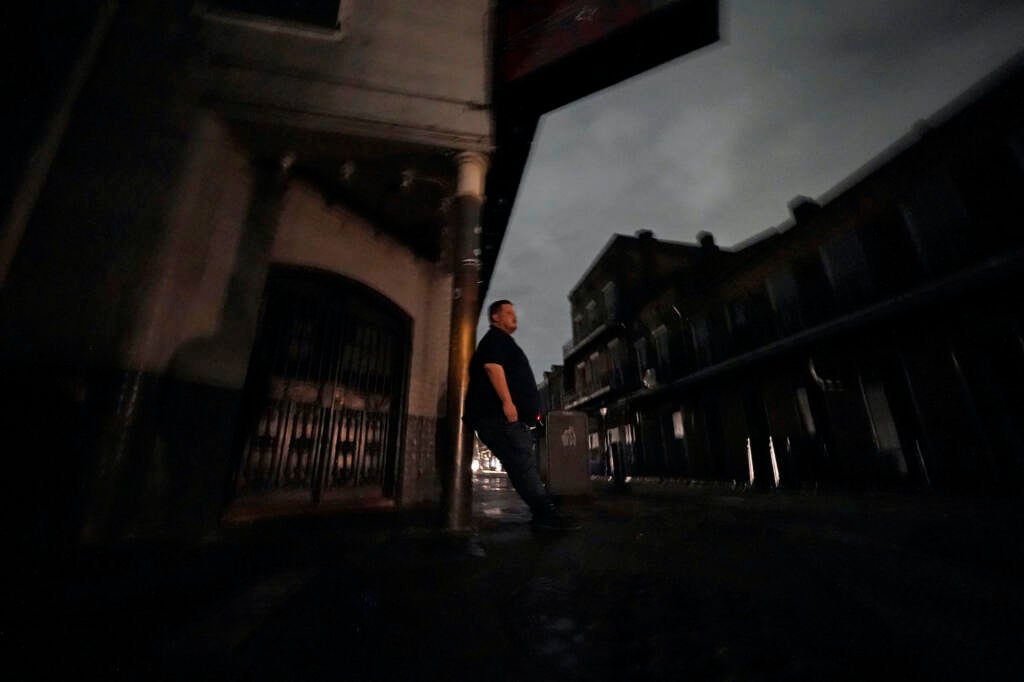
Ida’s 150 mph (230 kph) winds tied it for the fifth-strongest hurricane ever to hit the mainland. Its winds were down to 60 mph (97 kph) early Monday, and forecasters said it would rapidly weaken while still dumping heavy rain over a large area.
In Mississippi’s southwestern corner, entire neighborhoods were surrounded by floodwaters, and many roads were impassable.
Louisiana Gov. John Bel Edwards warned the state late Sunday that it faces dark days of cleanup without power. But he added: “There is always light after darkness, and I can assure you we are going to get through this.”
___
Associated Press writers Emily Wagster Pettus in Jackson, Mississippi; Seth Borenstein in Kensington, Maryland; Michael Biesecker in Washington; Sudhin Thanawala in Atlanta; and Jeffrey Collins in Columbia, South Carolina. contributed to this report.
WHYY is your source for fact-based, in-depth journalism and information. As a nonprofit organization, we rely on financial support from readers like you. Please give today.




